
Station Name: CLAPHAM JUNCTION
|
| Date opened: | 2.3.1863 |
| Location: | North side of St. Johns Hill |
| Company on opening: | London & North Western Railway |
| Date closed to passengers: | Still open |
| Date closed completely: | Still open |
| Company on closing: | Still open |
| Present state: | Still open |
| County: | London |
| OS Grid Ref: | TQ273755 |
| Date of visit: | 25th July 2009 |
Notes: Before the railway came the area was rural and specialised in growing lavender. On 21 May 1838 the London and Southampton Railway, which became the London and South Western Railway (L&SWR) opened its line from Nine Elms to Woking. That was the first railway through the area and a station was provided at Wandsworth (later renamed Clapham Common) that opened with the line. Nine Elms was a riverside site easily reach by steamer but it was on the edge of the built up area and too remote from central London to attract sort distance travelers.
When the station was built Battersea was regarded as a poor district while Clapham, a mile east, was more fashionable. The railway companies, seeking to attract a middle and upper class clientele, adopted the grander of the two names although the station is actually in Battersea. The station brought development to the area around it, the population rose from 6,000 in 1840 to 168,000 by 1910.
Today only Platform 2 is is used by West London Line trains, the track in Platform 1 having been lifted although there are numerous proposals to reinstate the platform. there are now two entrances, both from the subway: one at the north end onto Grant Road, and the small bus station, and the main one through a small shopping centre onto St John's Hill. Both were rebuilt as part of the station redevelopment in the 1980s and have ticket offices. There used to be another entrance from the footbridge onto St John's Hill, but this has been closed although there are proposals to reopen it. Additional source: Wikipedia For more pictures of Clapham Junction Station in the 50's and 60's see Mike Morant's 'Old Pics Brought to the Fore' web site. BRIEF HISTORY OF THE WEST LONDON LINE
The Birmingham, Bristol & Thames Junction Railway was authorised by an Act of Parliament of June 1836 with powers to buy the canal and to build a railway northward to the London and Birmingham Railway at Willesden across the proposed route of the Great Western which opened to Bristol in 1838; thus creating a through route mainly for freight traffic from Bristol and Birmingham to the River Thames, the capital's main commercial artery. The directors of the new company expected the Great Western and the London & Birmingham to use their proposed new line as the most convenient route to the Thames. They also hoped the line would generate passenger revenue from the L & B and GWR if it was extended from their proposed southern terminus at Kensington to a new terminus near Hyde Park Corner, the gateway to London.
Having purchased the ailing Kensington Canal Company for £36,000 the new company was itself in financial difficulty and a second Act of Parliament was required in 1840 to raise extra capital; at this time the company's name was shortened to the West London Railway. Trials to show-off the potential of the atmospheric railway system were held from 1840 to 1843 on a half-mile section of track adjacent to Wormwood Scrubs, leased to the system's promoters; but in the event, the line proceeded with conventional power. The 2.5 mile single line officially opened between West London Junction, Willesden and Kensington on 27 May, 1844, with regular passenger services beginning on 10 June with a 30-minute interval service. By this time the L & B and GWR had chosen their London termini and were no longer interested in using the West London Railway. The terminus at Kensington was some distance from Kensington itself and any potential commuters, and the line ran through open country throughout; from the outset it was not a commercial success.
It is said that the first train had one passenger with little improvement in the following months. In September and October 1844 passenger receipts were only £15 10s per month and according to the company minutes of 25th October 1844 "The 5.55pm from Kensington was delayed so long at the crossing that it didn't reach West London Junction until 7pm and the solitary passenger had missed the last train to Harrow." The minimal level of passenger returns became such a regular target of Punch magazine that the line started being called Punch's Railway "leading from nowhere to nowhere". The company blamed the failure of the line on the refusal of the L & B and GWR to stop their to stop their long distance trains at the respective junctions with the West London and with losses of £50 per week the line was forced to close after the last train on 30 November 1844 after less than six months.
The northern end of the Kensington Canal was infilled in 1861 with much of its course being used for the WLER. The new double track line between Willesden and Clapham Junction opened to passenger traffic on 2 March 1863. Kensington & Shepherds Bush (renamed Uxbridge Road) stations were rebuilt a little to the south of the original sites with new stations provided at Chelsea and Battersea and a further station opening at West Brompton on 1st September 1866. A third rail was laid to allow broad gauge trains to use the extension but this had limited use with broad gauge passenger trains running into Victoria until October 1866 and freight trains running to Chelsea Basin until November 1875.
The new multiplicity of connections led to considerable development of transfer freight traffic between the northern and southern lines while the former also opened depots south of the river. In spite of the equivalent possibilities for through passenger traffic, this didn't begin until 1904 and never attracted the expected passenger revenue.
During the 1923 Grouping the West London Railway nominally retained its independence although the West London Extension Railway was absorbed. Despite the early heavy passenger numbers use of the line dwindled with the construction of the deep-level underground network and the introduction of trams and motor busses which provided a quicker and more convenient route for commuters to reach central London. Local north-south passengers also deserted the line in favour of road transport. WW2 hastened the demise of the now uneconomic passenger services. Following severe bomb damage, the advertised steam services from Clapham Junction - Kensington ceased on 20th October 1940 and the electric services, LMSR from Willesden and LT now from Edgware Road on 3rd and 20th October respectively.
The line remained busy with 30 freight trains in each direction daily and holiday excursions and special cross country workings were common. On 24th May 1966 the West London Line received a new lease of life with the opening of the Motorail terminal at Kensington, with car-transport services to a wide range of destinations in Scotland, Wales and the West Country. These services ceased in 1988 and the Motorail terminal closed. It’s now used as a covered car-park and the reception area is now the booking hall and ticket office.
The line is electrified at 750 V DC third rail from the south to the North Pole depot, where the electrification changes to 25 kV AC overhead. The work was carried out as part of Channel Tunnel infrastructure improvements in 1993.
The line still carries considerable freight traffic and was used by Eurostar trains between Waterloo International and the depot at North Pole Junction prior to November 2007. Recent timetable changes have meant that some London Overground peak hour trains now continue beyond Willesden Junction onto the North London Line to Stratford.
Click on the station name to see other stations on the West London Line: Battersea, Imperial Wharf NEW STATION, Chelsea & Fulham, West Brompton REOPENED, Kensington (1st site), Kensington (2nd site), Kensington Olympia, Uxbridge Road REOPENED AS SHEPHERDS BUSH 3rd SITE, Shepherds Bush (2nd site), Shepherds Bush(1st site), St. Quintin Park & Wormwood Scrubbs (1st site), St. Quintin Park & Wormwood Scrubbs (2nd site), West London Junction (1), West London Junction (2) & Willesden Junction STILL OPEN See also Hammersmith (Grove Road) & Shepherds Bush on the |
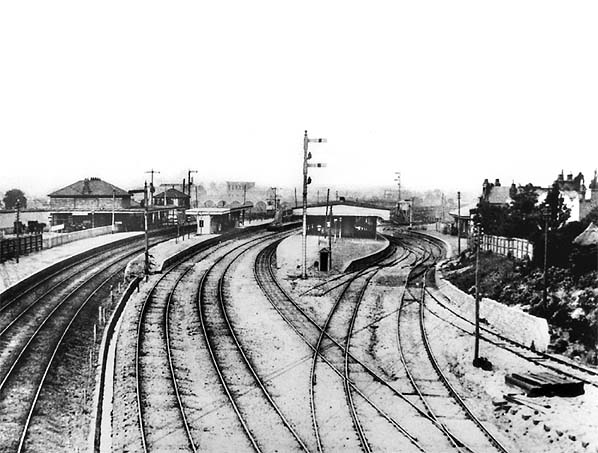

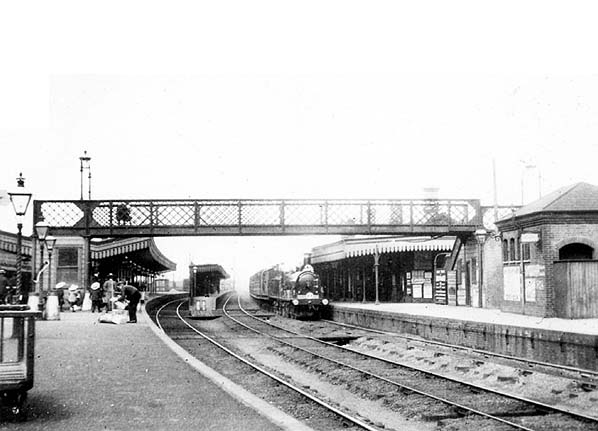
junction_old2.jpg)
Copyright photo by H C Casserley
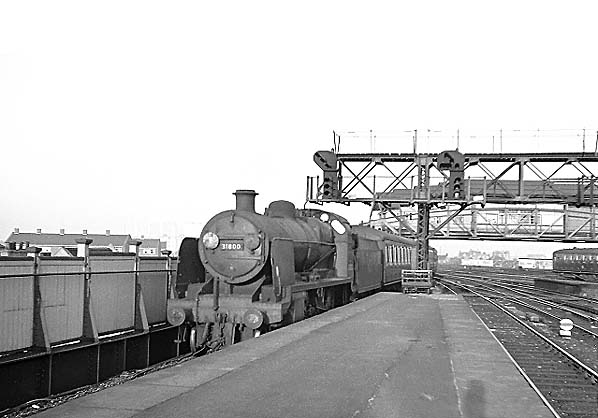
Photo from Mike Morant collection
junction_old3.jpg)
on its last run on 7th July 1967
Photo by A. Mcintyre
junction_thumb13.jpg)
Silverlink Swansong II Railtour at Platform 3 at Clapham Junction on 10th October 2007, awaiting departure for Willesden Junction.
Photo by Tim Edmonds from The Marlow & District Railway Society web site
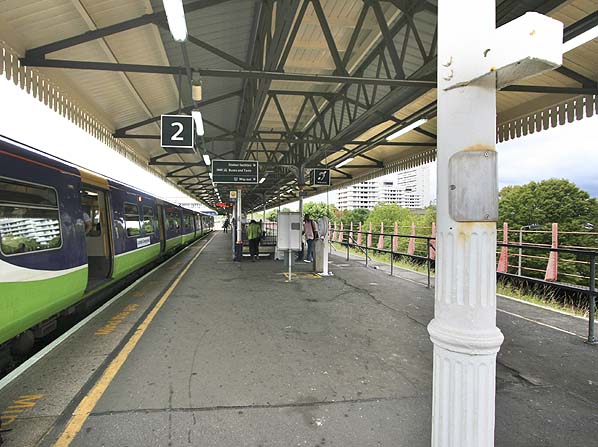
Photo by Nick Catford
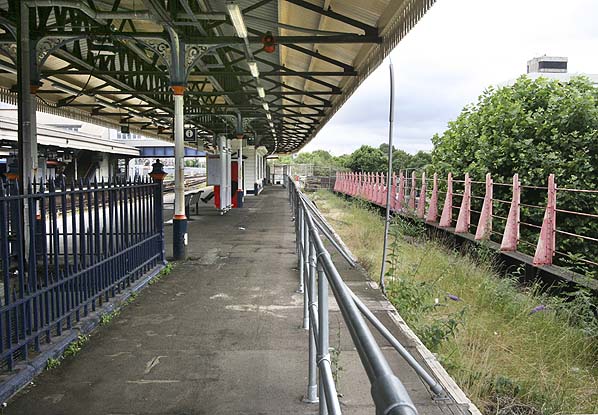
Photo by Nick Catford
Click on thumbnail to enlarge

|
| Last updated: Wednesday, 17-May-2017 09:12:54 CEST | © 1998-2009 Disused Stations |
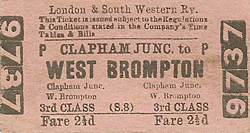
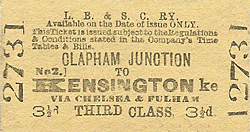
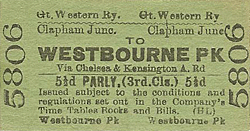
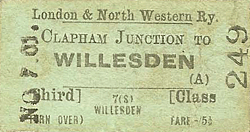
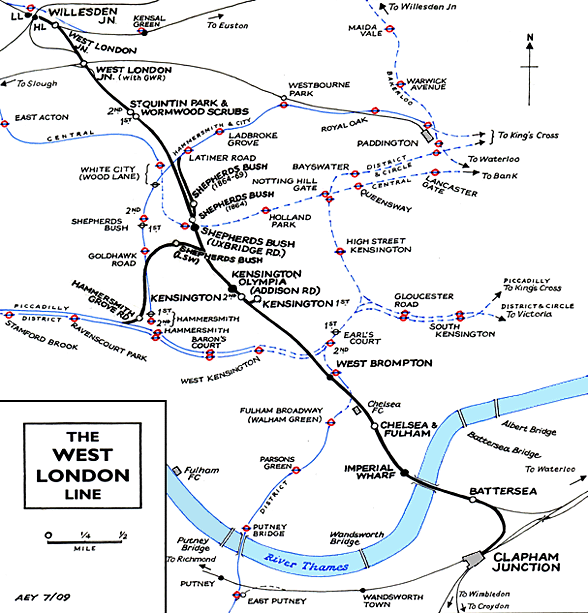


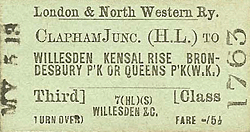

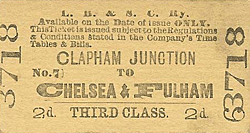

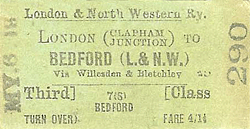











 Home Page
Home Page